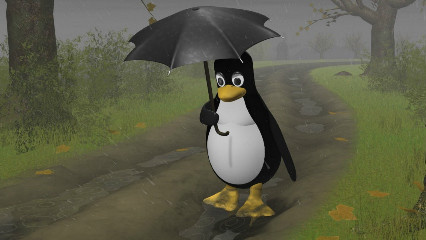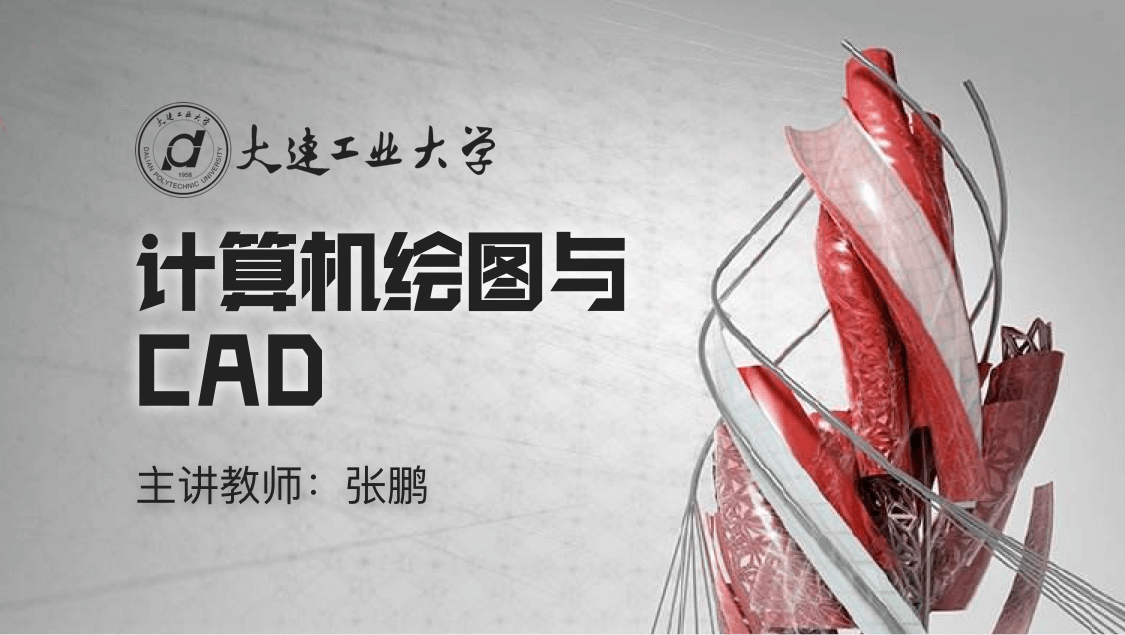
当前课程知识点:微积分1(Calculus I) > Chapter 3 Applications of the Derivative > Practical Problems > Practical Problems
返回《微积分1(Calculus I)》慕课在线视频课程列表
Today we study the Calculus (I)
The topic is Practical Problems
In practical life
there are many practical optimization problems
how to deal with
the kind of practical problems
The basic idea
is step by step method
The practical problem is changed into
mathematical question
How to do
Now look at the solving method
the concrete Computation Steps
Step 1
draw a picture
and assign appropriate variables
Step 2
write a formula
for our objective function
Write it as Q
And then
express Q as a function
of a single variable
Pay attention to a single variable
Step 4
try to find the critical points
Do you remember
what are our critical points
Yes
there are 3 kinds of points
end points
stationary points
and singular points
And the final step
try to determine
the maximum or minimum
Pay attention to
if in some practical questions
there is a unique stationary point
about the objective function
The corresponding function value at this point
is our desirable maximum or minimum
How to apply the following steps
So now look at Example 1
Try to find the greatest volume
that a right circular cylinder can have
if it is inscribed in a sphere of radius r
So now look at the picture
It is our the geometrical picture
So let the corresponding
height of cylinder be double h
volume be capital V
Look at the corresponding picture
This is R radius
This is our height double h
This is our little r
corresponding radius
So now look at
what is our objective function
Our objective function means
how to get the volume
So volume equals
basic area time the corresponding height
Basic area equals π r square time
where is our height
yes double h
so times double h
It is our V
How to do
Try to become
the objective function
is a function of one variable
By little r square plus h square
equals capital R square
we can get the relationship of h and R
So V equals double π
double π
h
Where is our little r square
Equals capital R square minus h square
So now our objective function
is a function of one variable
And then
pay attention to the domain h
h between 0 and capital R
Try to find the maximum point
What is it
Try to find the critical point
How to do
Yes
V is a function of h
So V prime for h
equals double π is a constant
The first term
R square h prime equals R square
The second term h cube prime
equals minus 3 h square
Corresponding
try to find
it is our
the V prime for h
Try to find the critical points
Let V prime h equals 0
obtain two points
One is positive
capital R over square root of 3
another is negative value
Pay attention to
delete the negative value
Why
Because h is our height
should be positive number
So negative value is deleted
So now
unique stationary point
corresponding
is our maximum volume
the point
So we can get
the unique stationary point h is
capital R over square root of 3
is our desirable point
is our maximum value point
Corresponding
maximum volume equals
V equals
double π time R square minus little h square
It is our final value
Pay attention to Example 1
How to apply the 5 steps
Write our objective function
of one single variable
Try to find
the stationary point means
ome critical points
and then get the maximum volume
In the similar idea
now look at Example 2
The curved triangle region
bounded by y equals 0
x equals 8
two straight lines
And another curve
y equals x square
Try to find one point P
The P lies in y equals x square
such that
the corresponding
triangle area bounded by
the tangent line through P
y equals 0
and x equals 8
is our the maximum value
So now how to write it
Look at the picture
In this picture
the pink curve
means y equals x square
The green straight line
means x equals 8
This is our
y equals 0
Together
passing P
do some tangent line
capital PT
So now look at
the corresponding triangle region ABC
Try to find the maximum area
So now
as shown in the picture
let the tangent point P(x0, y0)
We try to find
the concrete values for the fixed point
How to write it
Look at the tangent line
The tangent line capital PT
according to the point slope form
What is our point
Yes
P(x0, y0)
How about slope
Yes
slope means the slope value
So we can write it
y minus y0 equals k
k means slope
times x minus x0
What is our slope
Pay attention to P
that's on the pink curve
How about the pink curve
Y equals x square
Y equals x square
corresponding slope means double x
taking the value means double x0
So it is our the tangent line
So now try to get
the P lying in y equals x square
So y0 equals x0 square
satisfying this equation
Together we can get
corresponding intersection point
Corresponding A
half x0,0
Corresponding C
8, 0
Corresponding B
8, corresponding 16 x0 minus x0 square
So we can make up the corresponding triangle region
How about the area
Yes
the area equals half time basis and height
And then
we can get
the area of triangle ABC equals half
this is our basis
this is our the corresponding height
Together
write it this form
Yes
it is our objective function
It is a function of one variable
means one single variable
Pay attention to the domain
x0
between 0 and 8
And then
S prime for variable
What is our variable
Yes x0
So prime x0 equals this equation
We can draw it by ourselves
Yes
so now look at this form
S prime x0 let
corresponding value equals 0
Try to find the critical points
So we can obtain
one point x0 equals 16 over 3
and then equals 16
Look at the domain
x0 between 0 and 8
So this value is deleted
There is one and only one stationary point
means the unique stationary point
In practical problem
the corresponding maximum area is
obtained at the stationary point
at the unique stationary point
So the point P is the final result
Corresponding
the maximum area S is the value
is our desirable maximum area
So in Example 2
We using the similar idea by the 5 steps
So now look at our summary
for our practical problems
How to do
Yes
the following steps
to solve the practical optimization problems
How about 5 steps
Look at
do you remember Step 1 until Step 5
Step 1 yes
draw a picture
and assign appropriate variables
May be height
may be length
may be width
means assign appropriate variables
And then
write a formula for the objective function Q
What is objective function
Yes
you find the maximum area
Area is our objective function
The minimum volume
corresponding volume is our objective function
And then try to
express Q as a function of
a single variable
Maybe there are two unknown variables
Try to
make the function into one single variable
And then try to find
the critical points
How many points
Yes
three kinds of points
end points
stationary points
and singular points
he last step
determine the maximum or minimum
If there are more than two points
how to do
Compare the values
So now look at
at the following question and answer
The question is
a corresponding rectangular box
is to be made from
a piece of cardboard 24 inches long
and 9 inches wide
by cutting out identical squares
Pay attention to
identical squares
from the four corners and turning up the sides
Look at our question
There are two questions
Question 1
find the dimension of the box of the
maximum volume
Question 2
what is the corresponding volume
Means give me
how about the value
We have the following idea
Let x be the width of the square
to be cut out
and capital V
the volume of the resulting box
How to write it
Do you remember the basic idea
Write our corresponding objective function
So in this question
V is our objective function
Do you remember the basic formula
V equals the length time width time height
In this question
the original length is 24
Minus from the 4 squares
So double x
So the length is 24 minus double x
Corresponding width
width
original is 9
9 minus double x
So width is 9 minus double x
The height doesn't change
Corresponding volume equals
length times width times height
Together equals
this expression
216 x minus 66 x square plus 4 x cube
It is a polynomial of x
Look at the variable x
It is a function of one variable x
x between 0 and 4 point 5
means the given domain
How to find
Try to find the critical points
So V prime for the variable x
V prime x equals 0
We can obtain two points
One point x equals 2
the other point x equals 9
Compare the domain x between 0 and 4 point 5
So the 9 is deleted
So there are only 3 critical points
How many
Three
how to get it
Two end points 0 and 4.5
and have another stationary point 2
Together
0 2 and 4 point 5
3 critical points
determine which value is maximum
So we can get
corresponding V(0)
V(0) means 0 taking 0 0 0
together volume equals 0
The value V at the point 4 point 5
Taking the value
equals 0
V the value at the point 2
Taking the stationary point 2
The final result equals 200
Now compare the three values 0
0 0 200
Of course 200 is the maximum
So corresponding
x equals 2 is the final result
Corresponding volume is 200
The box is 20 inches long
5 inches wide
and 2 inches deep
Corresponding
3 dimensional
So now the class is over
See you next time
-Course Introduction
--Document
-Introduction to Limits
-Rigorous Study of Limits
--Document:Rigorous Study of Limits
-Limit Theorems
-Limits Involving Trigonometric Functions
--Limits Involving Trigonometric Function
--Document:Limits Involving Trigonometric Function
-Limits at Infinity, Infinite Limits
--Limits at Infinity, Infinite Limits
--Document:Limits at Infinity; Infinite Limits
-Continuity of Functions
--Document:Continuity of Functions
-Chapter Review
--Document: chapter 1 supplement
-Assignments for Chapter 1
--Assignment 1
--Assignment 2
-Discussion Topics of Chapter 1
--Discussion Topics of Chapter 1
-Homework and Answer of Chapter 1
-Homework 1
--Homework 1
-Two Problems with One Theme
-The Derivative
-Rules for Finding Derivatives
--Rules for Finding Derivatives
--Document: Rules for Finding Derivatives
--Supplement: Rulesfor Finding Derivatives
-Derivate of Trigonometric Functions
--Supplement: Derivatives of Trigonometric Functions
-The Chain Rule
-Higher-Order Derivative
--Document: Higher-Order Derivatives
--Supplement: Higher-Order Derivatives
-Implicit Differentiation
--Document: Implicit Differentiation
--Supplement: Implicit Differentiation
-Related Rates
-Differentials and Approximations
--Supplement: Differentials and Approximations
-Chapter Review
-Assignments for Chapter 2
--Assignment 1
--Assignment 2
-Discussion Topics of Chapter 2
--Discussion Topics of Chapter 2
-Homework and Answer of Chapter 2
-Homework 2
--Homework 2
-Maxima and Minima
--Supplement:Maxima and Minima
-Monotonicity and Concavity
--Document: Monotonicity and Concavity
--Supplement: Monotonicity and Concavity
-Local Extrema and Extrema on Open Intervals
--Local Extrema and Extrema on Open Intervals
--Document: Local Extrema and Extrema on Open Intervals
--Supplement: Local Extrema and Extrema on Open Intervals
-Practical Problems
--Document: Practical Problems
--Supplement: Practical Problems
-Graphing Functions Using Calculus
-The Mean Value Theorem for Derivatives
--The Mean Value Theorem for Derivatives
--Document: The Mean Value Therorem for Derivatives
--Supplement:The Mean Value Therorem for Derivatives
-Solving Equations Numerically
-Anti-derivatives
-Introduction to Differential Equations
-Chapter Review
--Supplement: Supplement for Chapter 3
-Assignments for Chapter 3
--Assignment 1
--Assignment 2
-Discussion Topics of Chapter 3
--Discussion Topics of Chapter 3
-Homework and Answer of Chapter 3
-Test 1
--Test 1
-Introduction to Area
--Supplement: Introduction to Area
-The Definite Integral
--Document: The Definite Integral
--Supplement: The Definite Integral
-The First Fundamental Theorem of Calculus
--The First Fundamental Theorem of Calculus
--Document: The First Fundamental Theorem of Calculus
--Supplement: The First Fundamental Theorem of Calculus
-The Second Fundamental Theorem of Calculus and the Method of Substitution
--The Second Fundamental Theorem of Calculus and the Method of Substitution
--Document: The Second Fundamental Theorem of Calculus and the Method of Substitution
--Supplement: The Second Fundamental Theorem of Calculus and the Method of Substitution
-The Mean Value Theorem for Integrals and the Use of Symmetry
--Supplement: The Mean Value Theorem for Integrals and the Use of Symmetry
-Numerical Integration
-Chapter Review
-Assignments for Chapter 4
--Assignment 1
--Assignment 2
-Discussion Topics of Chapter 4
--Discussion Topics of Chapter 4
-Homework and Answer of Chapter 4
-Homework 4
--Homework 4
-The Area of a plane region
--Document: The Area of a Plane Region
-Volumes of Solids: Slabs, Disks
--Volumes of Solids: Slabs, Disks
--Document: Volumes of Solids Disk Method
-Volumes of Solids of Revolution: Shells
--Volumes of Solids of Revolution: Shells
--Document: Volumes of Solids Shell Method
-Length of a plane curve
--Document: Length of a Plane Curve
-Work and Fluid Force
--此章节为自学模块
-Moments and Center of Mass
--此章节为自学模块
-Probability and Random Variables
--此章节为自学模块
-Chapter Review
--此章节为自学模块
-Assignments for Chapter 5
--Assignment 1
--Assignment 2
-Discussion Topics of Chapter 5
--Discussion Topics of Chapter 5
-Homework and Answer of Chapter 5
-Homework 5
--Homework 5
-The Natural Logarithm Function
--此章节为自学模块
-Inverse Functions
--此章节为自学模块
-The Natural Exponential Function
--此章节为自学模块
-General Exponential and Logarithm Function
--此章节为自学模块
-Exponential Growth and Decay
--此章节为自学模块
-First-Order Linear Differential Equations
--此章节为自学模块
-Approximations for Differential Equations
--此章节为自学模块
-The Inverse Trigonometric Functions and Their Derivatives
--此章节为自学模块
-The Hyperbolic Functions and Their Derivatives
--此章节为自学模块
-Chapter Review
--此章节为自学模块
-Basic Integration Rules
--Document: Basic Integration Rules
-Integration by parts
--Document: Integration by Parts
-Some Trigonometric Integrals
--Some Trigonometric Integrals
--Document: Some Trigonometric Integrals
-Rationalizing Substitutions
--Document: Rationalizing Substitutions
-Integration of Rational Functions Using Partial Fraction
--Integration of Rational Functions Using Partial Fraction
--Document: Integration of Rational Functions Using Partial Fractions
-Strategies for Integration
--此章节为自学模块
-Chapter Review
--此章节为自学模块
-Assignments for Chapter 7
--Assignment 1
--Assignment 2
-Discussion Topics of Chapter 7
--Discussion Topics of Chapter 7
-Homework and Answer of Chapter 7
-Homework 7
--Homework 7
-Indeterminate Forms of Type
--此章节为自学模块
-Other Indeterminate Forms
--此章节为自学模块
-Improper Integrals: Infinite Limits of Integration
--Improper Integrals: Infinite Limits of Integration
--"Improper Integrals Infinite Limits of Integration" Document
-Improper Integrals: Infinite Integrands
--Improper Integrals: Infinite Integrands
--"Improper Integrals Infinite Integrands" Document
-Chapter Review
--此章节为自学模块
-Assignments for Chapter 8
--Assignment 1
--Assignment 2
-Discussion Topics of Chapter 8
--Discussion Topics of Chapter 8
-Homework and Answer of Chapter 8
-Test 2
--Test 2





